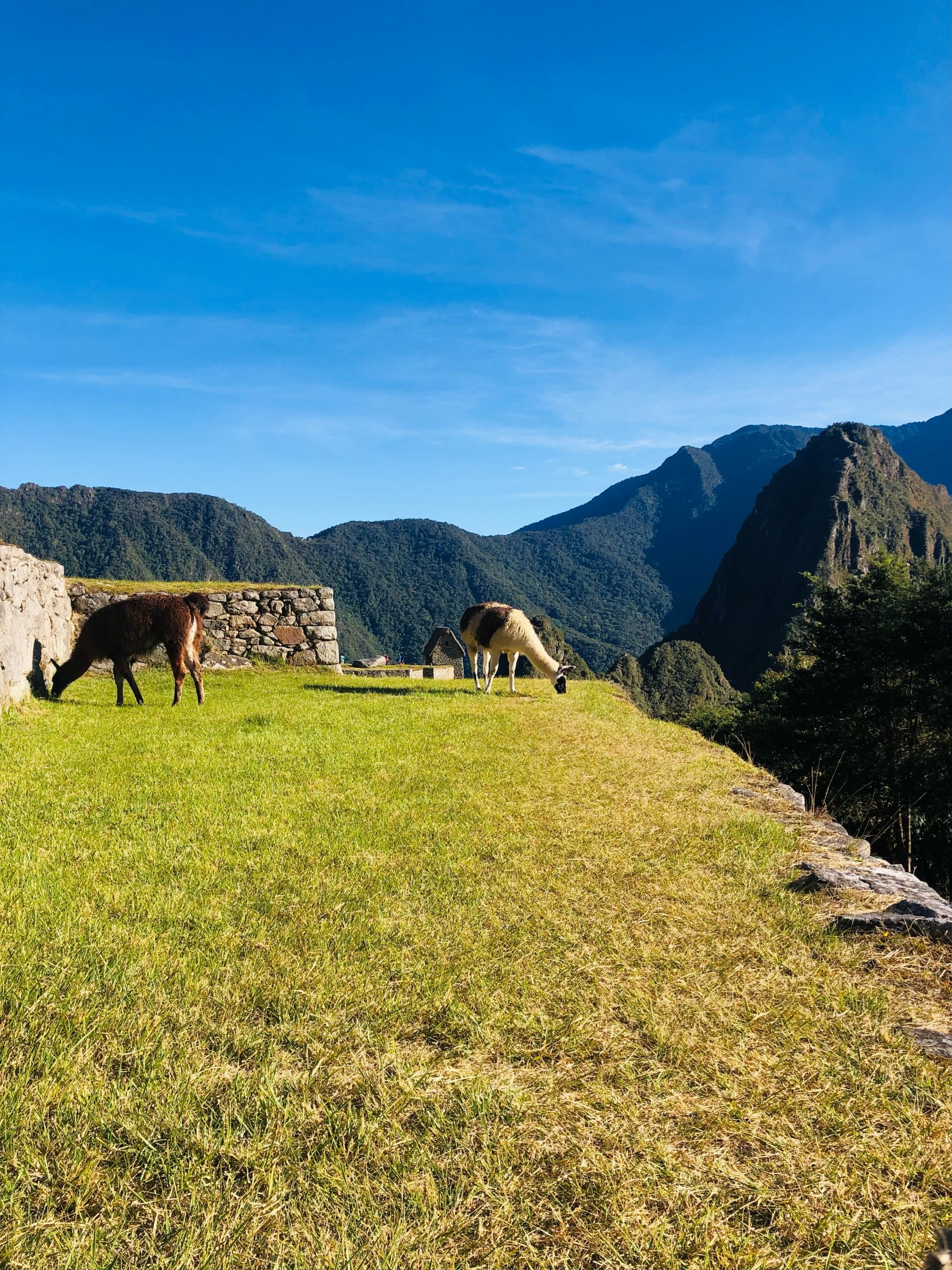
Each year, countless travelers embark on a journey to explore the breathtaking Inca citadel of Machu Picchu in Peru’, no surprise Machu Picchu was voted as one of the new seven wonders in the world. However, reaching the sprawling agricultural terraces, intricate stone structures, and panoramic hilltop vistas of this UNESCO World Heritage site comes at a cost, both financially and in terms of navigating intricate logistics. But don’t worry! I am here to help, I will share everything you need to know as first timers in Machu Picchu so you can make the most out of this experience, because believe me, it’s going to be one of the most amazing in your entire life!
In 1911, American explorer Hiram Bingham stumbled upon the Inca site we now know as Machu Picchu, sparking a scientific interest that would propel the site to global fame. Bingham’s journey through the Urubamba Valley was guided by Melchor Arteaga, a local farmer who described Machu Picchu in his native language. In this language, Machu Picchu translates to “old mountain,” referencing the prominent mountain facing the citadel. Behind the citadel stands Huayna Picchu, more commonly known as Machu Picchu Mountain, which translates to “young mountain”.
Despite various theories, the original Inca name for the city, now called Machu Picchu, remains unknown. It’s also essential to note that Machu Picchu wasn’t truly the “Lost” City of the Incas, as local inhabitants were aware of the site long before Bingham’s arrival.
Machu Picchu’s accessibility today owes much to the fact that the Spanish conquerors never stumbled upon this hidden citadel. Preservation of Machu Picchu can be attributed to its secluded location, but there’s also evidence suggesting that the Incas intentionally obscured pathways leading to the site.
During Hiram Bingham’s expeditions, the site was concealed beneath thick forest vegetation, which was subsequently cleared, revealing the ruins we recognise today. Although, there have been some restoration efforts, Machu Picchu stands as one of the best-preserved archaeological sites from its era, with approximately 75% of its original structure intact. Interestingly, only around 40% of the site is visible to visitors, as the remaining 60% remains veiled by nature.
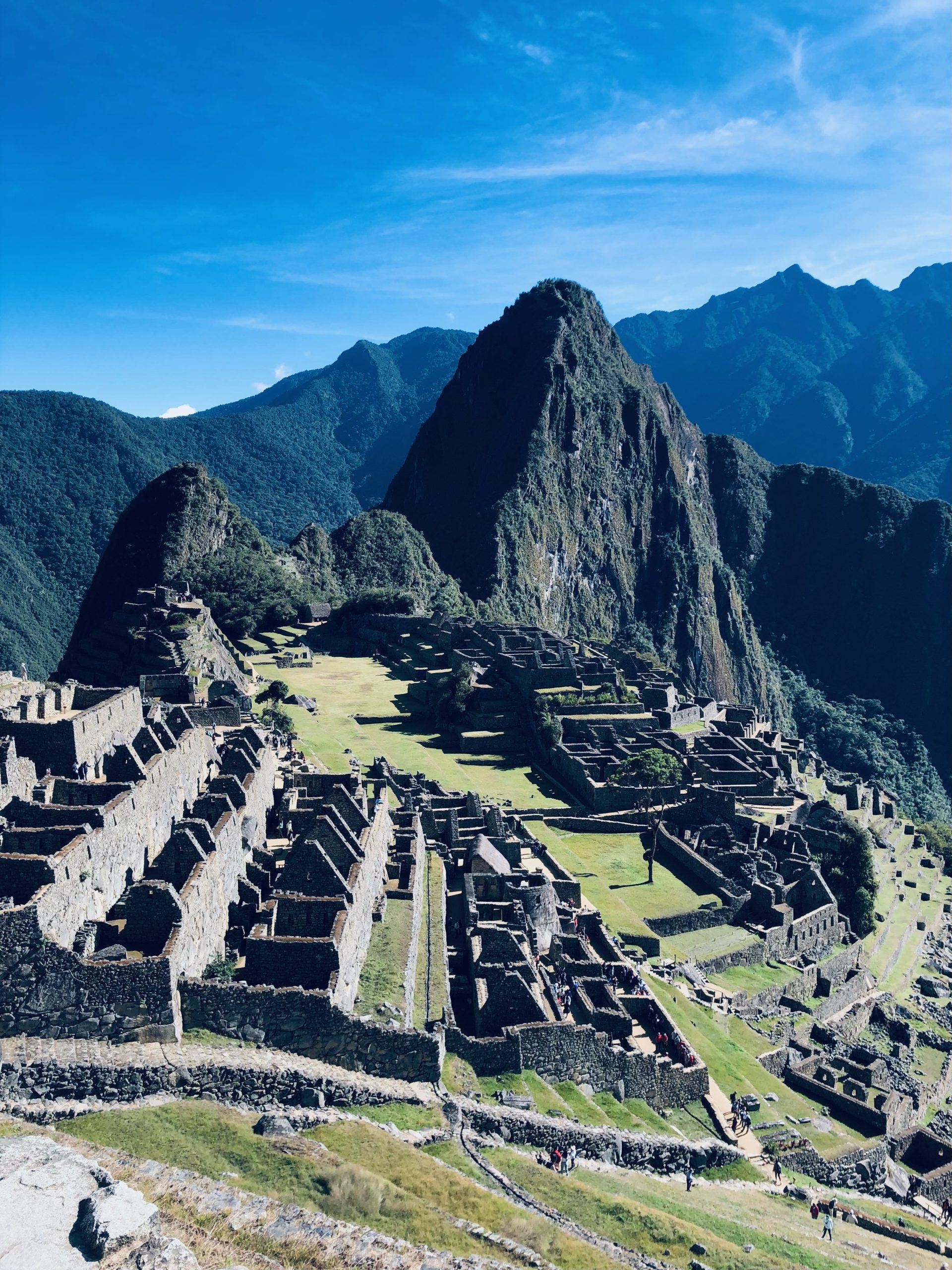
REACHING MACHU PICCHU
First and foremost, it’s important to be aware that there are no public roads leading directly to Machu Picchu. The nearest access point to Machu Picchu is the town of Aguas Calientes, Machu Picchu Pueblo. Unless you’re embarking on a multi-day trek, your journey will start from Aguas Calientes first, followed by a short bus ride or a steep hike up to Machu Picchu.
Furthermore, the sole means of reaching Aguas Calientes (excluding trekking) is by train from the town of Ollantaytambo, situated in the heart of the Sacred Valley between Cusco and Machu Picchu.
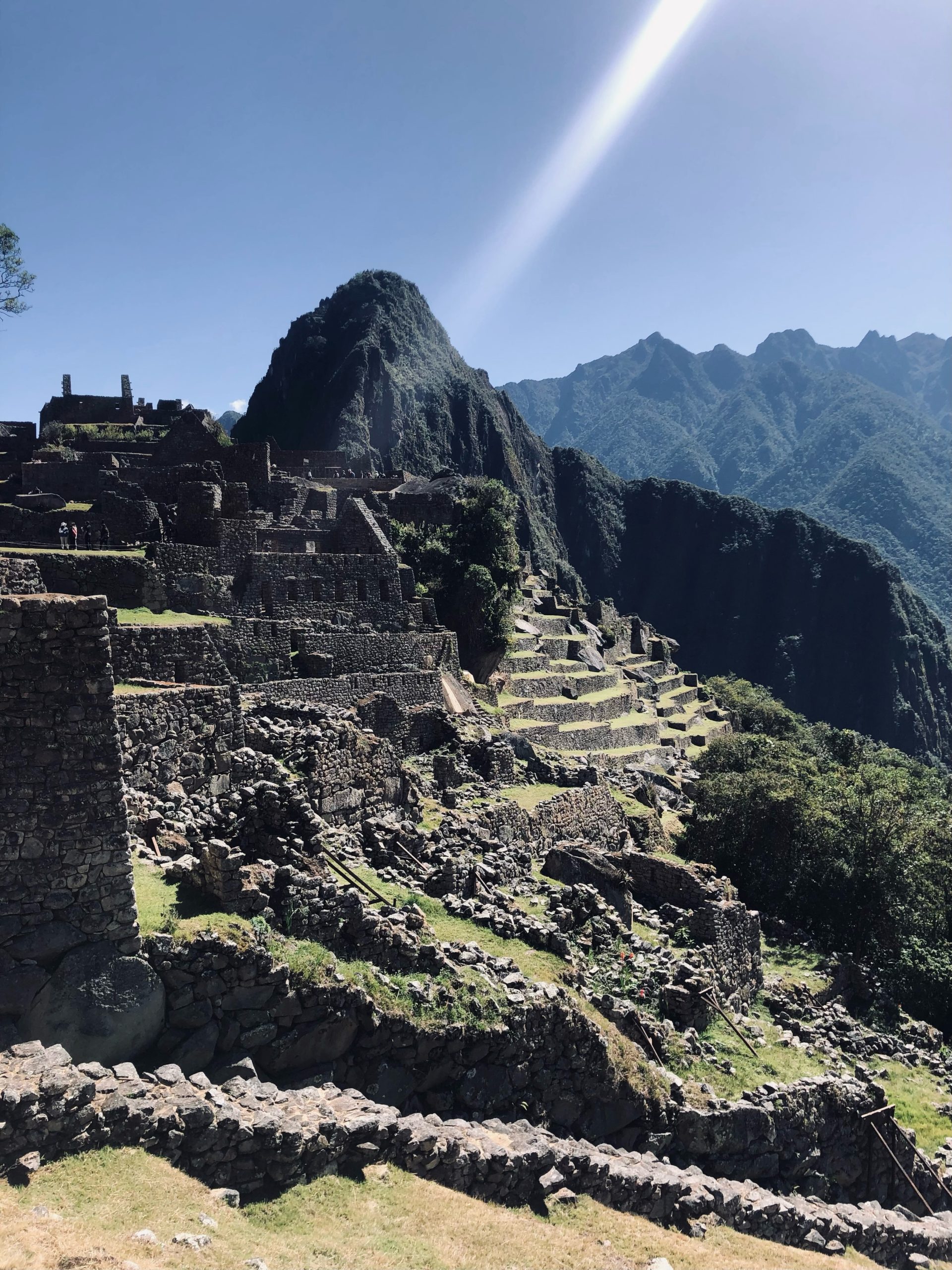
Now, let’s get into the details. You have a few different options for getting from Cusco to Machu Picchu itself, each explained in more detail below:
DIRECT TRAIN JOURNEY FROM CUSCO TO AGUAS CALIENTES
- Ticket Price Range: $120 to $400 for a round trip per person
- Travel Duration: Approximately 4 hours
- Ticket Booking: Available through PeruRail or IncaRail
The most convenient and widely chosen method to reach Machu Picchu from Cusco involves a direct train ride from Cusco to Aguas Calientes, with a stop at Ollantaytambo along the route. Both PeruRail and IncaRail operate this direct train service, taking approximately 4 hours for a one-way journey.
These railway companies offer a variety of ticket options, ranging from basic economy fares to opulent private cabins that include gourmet meals and live musical performances. Consequently, the round-trip ticket prices can fluctuate significantly, starting from around $120 per person.
If you are into a more luxurious way of travelling you may want to consider the Hiram Bingham train from Cusco to Aguas Caliente, prices may be up to $400 round trip if you opt for this mode of transport.
BIMODAL SERVICE FROM CUSCO TO AGUAS CALIENTES
- Ticket Price Range: $110 to $200.
- Total Duration: 6 – 8 hours
- Ticket Booking: PeruRail
Another way to reach Machu Picchu from Cusco is through the bimodal service, provided by both PeruRail and IncaRail. This service combines a private bus transfer from Cusco to Ollantaytambo with a train ticket from Ollantaytambo to Aguas Calientes.
The significant advantage of this option over the direct train route is the opportunity it provides to spend a few hours exploring Ollantaytambo, depending on the duration of your layover, and it tends to be more budget-friendly.
THE ROUTE VIA CUSCO – HYDROELECTRIC
- Ticket Price Range: $67 for a round trip per person
- Travel Duration: Approximately 6-7 hours
- Ticket Booking: Not available online, at the station
The route via Cusco – Hydroelectric – is a pathway leading to the town of Aguas Calientes. This journey can be undertaken by bus and train or on foot, traversing the hydroelectric power station. The route unfolds through captivating landscapes around Machu Picchu and typically takes around 6 to 7 hours and it is cheaper than the train.
This alternative route can be broken down into the following steps:
First step – Commencing with a bus or minibus ride from Cusco to the town of Santa Teresa.
Second step – Progressing further with a collective taxi ride from Santa Teresa to the Hydroelectric power station.
Third step – Upon reaching the Hydroelectric station, there are two options to continue the journey to Aguas Calientes:
- Walking: Embark on a 3-hour walk parallel to the Vilcanota River.
- By train: Opt for a tourist class train, which takes just 45 minutes to reach Aguas Calientes.
Fourth step – From Aguas Calientes, the climb over Machu Picchu can be accomplished either by bus or on foot.
THE CLASSIC INCA TRAIL
- Ticket Price Range: Depends on which tour you are going with
- Travel Duration: Takes four days
Another route from Cusco to Machu Picchu involves embarking on an organized multiday Machu Picchu hike along the Inca Trail trek, a section of the extensive network of Incan roads built during the empire’s expansion. I would strongly recommend to not do this on your own, unless you are an expert hiker. If not, there are several tour operators that organizes these type of treks and that ensure you take the hike in the safest way possible. Be aware that you need to get physically ready for the Inca Trail: it’s a 43 km route with an elevation of more than 4,000 meters. All of the treks towards Machu Picchu will require camping. It’s essential to note that the Inca Trail leading to Machu Picchu is closed throughout February each year for maintenance.
There is also a possibility to opt for a one day trek of the Inca Trail (the hike will be around 6 hours).
For those seeking a less crowded experience or desiring to explore different facets of Peru en route to Machu Picchu, numerous hiking alternatives are available. One of the most popular routes is around the imposing Salkantay Mountain, standing tall at 20,569 feet in the Peruvian Andes. Several tour companies offer Salkantay Treks just select the one that fits better your travel style and your budget.
FROM AGUAS CALIENTES TO MACHU PICCHU
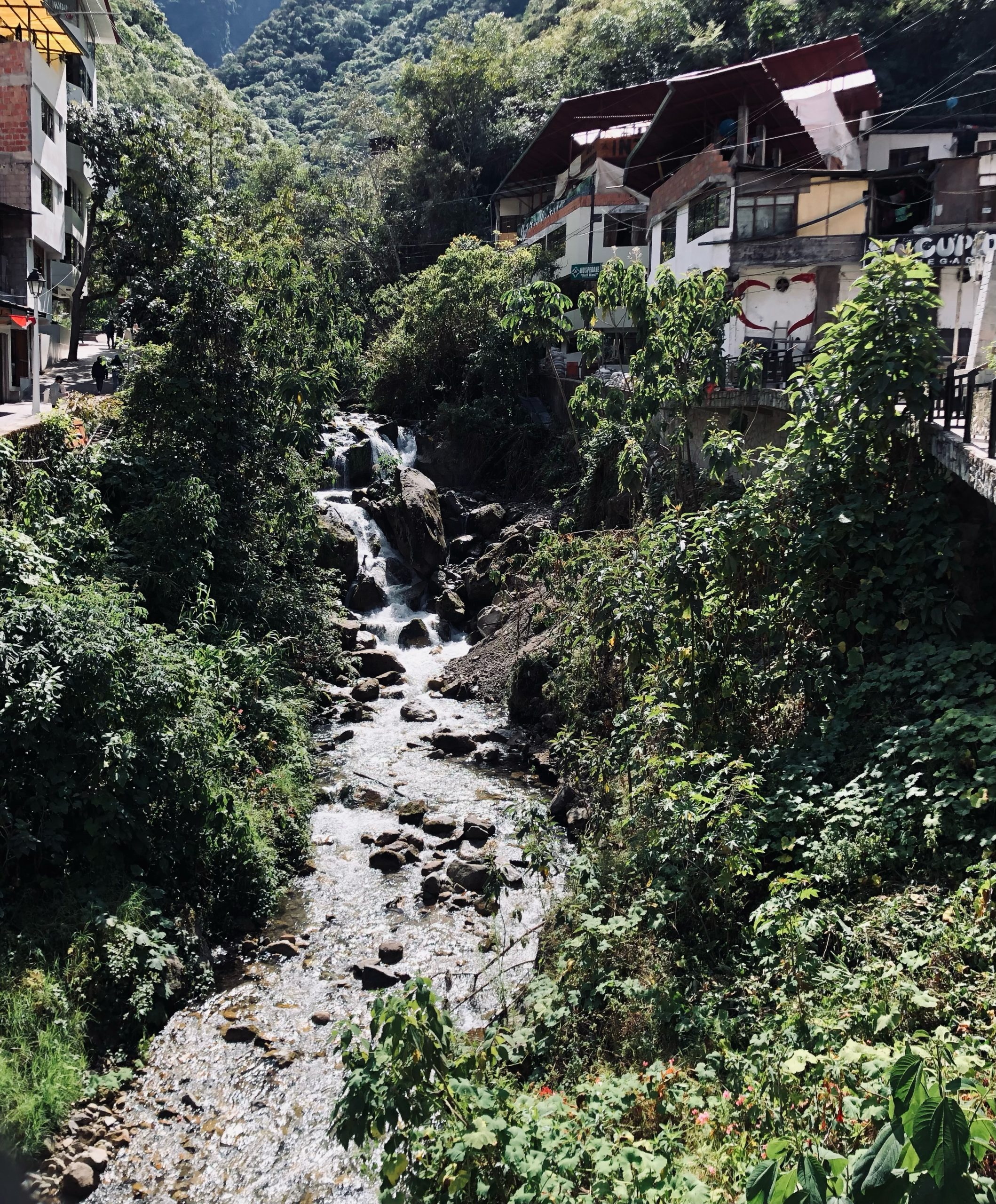
BY BUS: AGUAS CALIENTES TO MACHU PICCHU
- Ticket Price: $24 for a round-trip journey
- Travel Duration: Approximately 30 minutes
The most popular method to reach Machu Picchu from Aguas Calientes is a 30-minute bus ride: Bus Tickets for Machu Picchu. Tickets can be purchased online, ensuring a hassle-free experience. Key details about the bus journey include:
- The first bus departs at 5:30 am, with buses departing every 5 to 10 minutes thereafter.
- Buses leave from Avenida Hermanos Ayar, situated across from the train station. The area becomes bustling with buses and passengers well before the 5:30 am departure time.
- Bus tickets do not have a limited supply, eliminating concerns about them selling out.
- While tickets can be purchased in person in Aguas Calientes (cash only), it is advisable to buy them online in advance.
- For online purchases, it’s essential to print out the tickets as the bus conductors scan printed tickets more reliably than mobile phone tickets.
BY FOOT: AGUAS CALIENTES TO MACHU PICCHU
- Ticket Price: Free
- Travel Duration: Approximately 2 hours (one way)
Alternatively, if you prefer a more adventurous approach, you can hike to Machu Picchu. However, be prepared for a challenging 2-mile uphill trek. The hike typically takes around 2 hours to complete one way. If hiking uphill seems daunting, you have the flexibility to hike one way and take the bus either up or down, tailoring the experience to your preferences and fitness level.
MACHU PICCHU TICKETS:
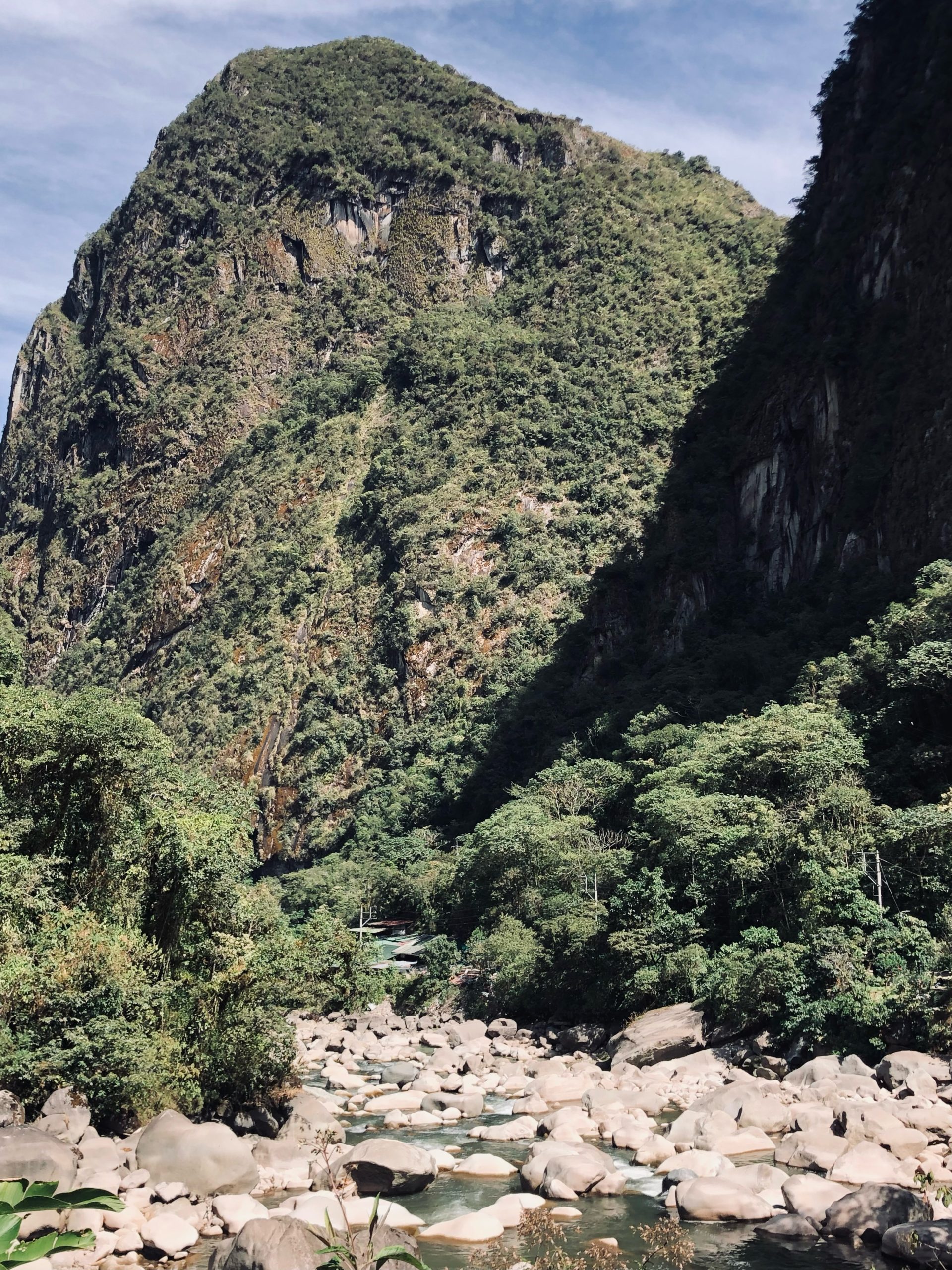
Even if you purchase your Machu Picchu ticket in advance, having a guide is mandatory, whether you’re part of an organised tour or traveling independently. Guides can be hired outside the gates or booked in Aguas Calientes.
To manage over-tourism at Machu Picchu, the Peruvian government implemented a ticketing system divided into five different circuits. Tickets need to be purchased beforehand and are priced at approximately $42 for adults and $20 for students and minors. When you book online, you can see the exact number of available tickets for that day. On the day of your visit, you’ll choose one of the five circuits. These strict controls are in place to safeguard the site from the negative impact of excessive visitors. Before booking, carefully review the circuits to identify the landmarks included in each one.
BEST TIME TO VISIT MACHU PICCHU
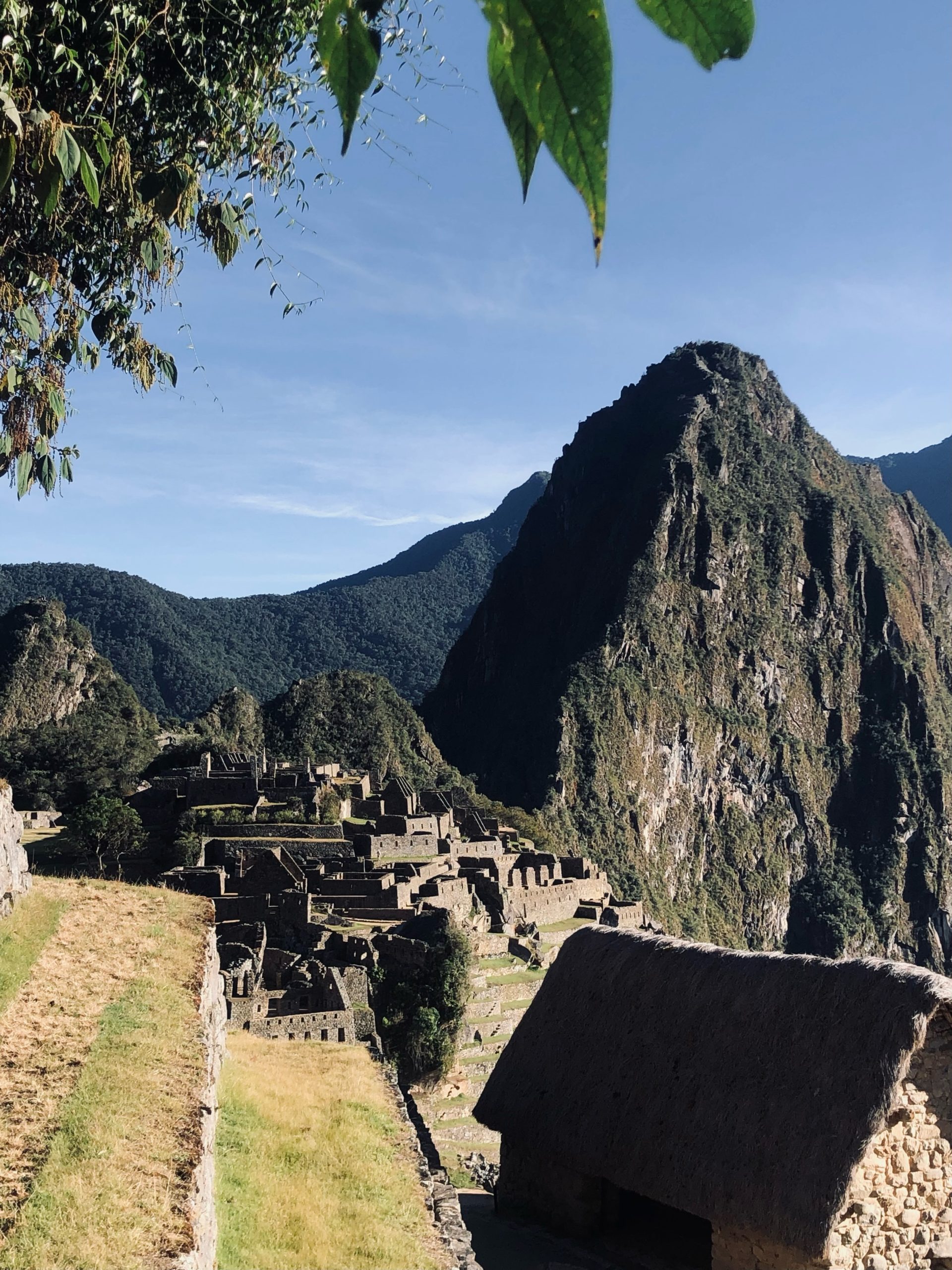
The best time to visit Machu Picchu is throughout the year as the site remains open year-round. The official rainy season spans from October to April, but rainfall is possible at any time. Peak tourist activity is observed in July and August, so expect big crowds during these months. Sundays tend to be particularly busy, as residents of the Cusco province are granted free entry, in addition to the daily visitor limit.
As for the ideal time of day to visit Machu Picchu, there isn’t a perfect answer. The site experiences crowds throughout the day, and the weather can be unpredictable. However, during the rainy season, mornings are more likely to be foggy. Whether fog enhances the view by adding an air of mystery or detracts from it depends on personal preference.
In the afternoons, crowds can thin out slightly as day-trippers start returning to the train station for their journey back to Cusco.
PREPARING FOR THE VISIT:
DEALING WITH ALTITUDE:
The last thing you’d want during your Machu Picchu visit is to be hit by altitude sickness. Chances are, your originating location is significantly lower in altitude than Cusco (over 3000 meters) or Machu Picchu (just under 2,500 meters). It’s important to allow yourself a good amount of time time to acclimate gradually, minimising the risk of common symptoms such as nausea, headaches, dizziness, fatigue, and breathlessness.
It is recommended to spend a couple of days in Aguas Caliented to get used to the altitude before hiking to Machu Picchu.
During your acclimatisation period, it’s better to avoid alcohol and strong physical activities. Instead, consume plenty of water and coca tea, allowing your body to gradually adapt to the thinner air.
WHAT TO BRING:
Peruvian weather can be unpredictable, especially during the rainy season.
Make sure to carry water and a rain jacket, even if the weather appears sunny. Speaking of sunshine, it’s important to note that the ozone layer over Peru is thin, and when coupled with the high elevation, the sun’s rays are exceptionally strong. To protect yourself, wear a hat and apply a generous amount of high SPF sunscreen. Additionally, keep insect repellent on hand: you will thank me later for this tip!
Also keep in mind that there are items you should avoid bringing. Drones, umbrellas, walking sticks, and trekking poles are all prohibited at Machu Picchu. Travelers who rely on sticks or poles for mobility can bring them, but only if fitted with protective rubber tips over the ends.
BEYOND MACHU PICCHU– TRIP IDEAS
A VISIT TO THE SACRED VALLEY
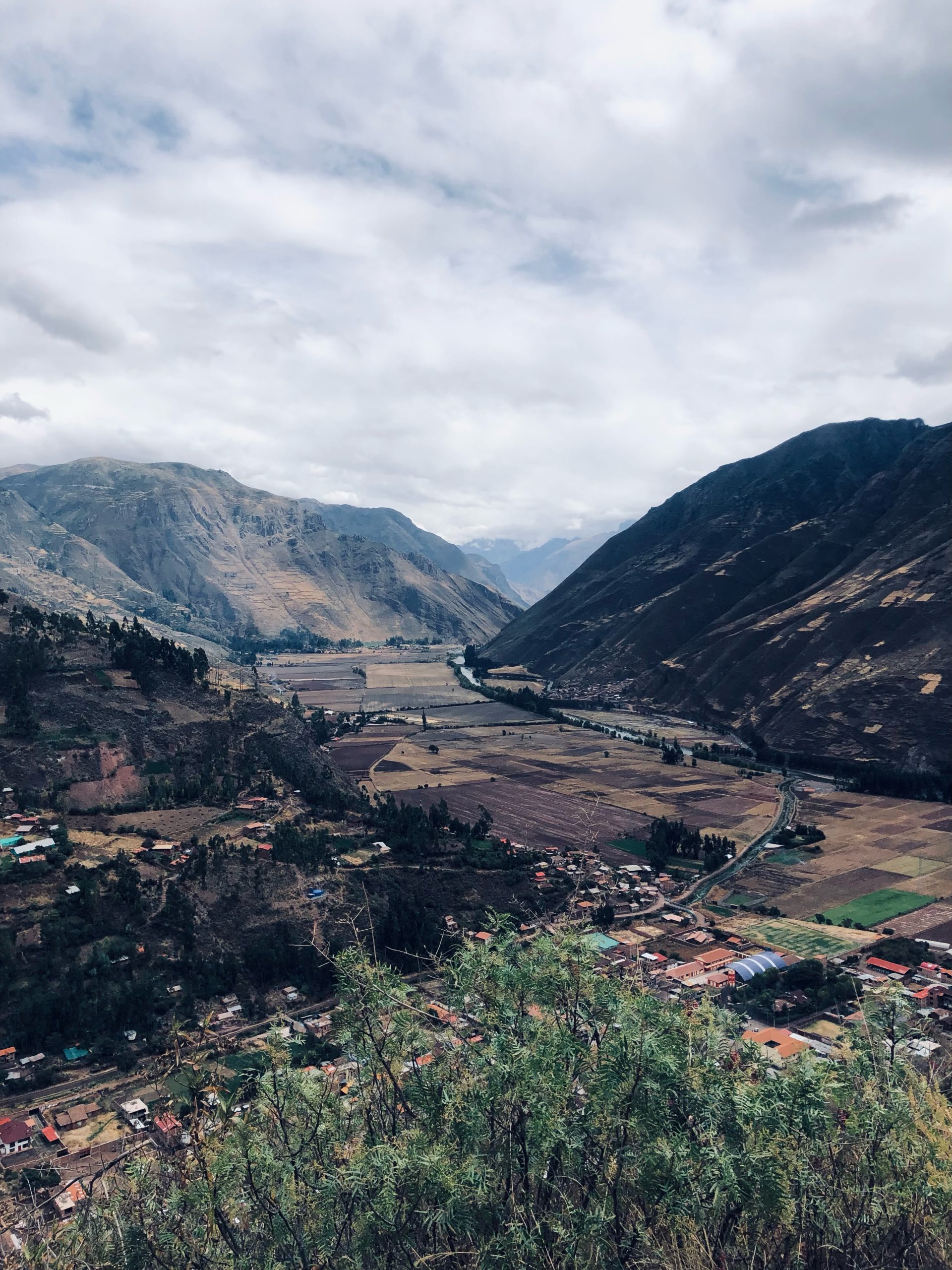
After visiting Machu Picchu, you should consider extending your adventure and exploring the Sacred Valley.
The Sacred Valley, located near Cusco in Peru’, is a region renowned for its archaeological sites, picturesque landscapes, and vibrant culture. It was once the heartland of the Inca Empire and holds significant historical and spiritual importance.
In the Sacred Valley, visitors can explore ancient Inca ruins, including those in Pisac and Ollantaytambo, marveling at the engineering brilliance of the Incas. The valley is dotted with traditional Andean villages where indigenous communities maintain their customs and crafts, offering a glimpse into authentic Peruvian life.
Additionally, the Sacred Valley is known for its stunning natural beauty, with terraced fields, majestic mountains, and the meandering Urubamba River creating a breathtaking backdrop. Visitors can engage in outdoor activities like hiking, biking, and river rafting, immersing themselves in the region’s natural splendor.
The area also hosts vibrant markets, such as the one in Pisac, where travelers can shop for handmade textiles, jewelry, and local produce, experiencing the colors and flavors of Peruvian culture.
Overall, the Sacred Valley provides a captivating blend of history, culture, and natural beauty, making it a must-visit destination for travelers interested in exploring Peru’s rich heritage.
LIMA:
Lima, the capital of Peru’, is a bustling metropolis located on the central western coast of the country. It’s a city where ancient history meets modern urbanity. In Lima, you’ll find a mix of colonial architecture, including the historic Plaza de Armas and the San Francisco Monastery, contrasted with contemporary art galleries, trendy neighborhoods, and a vibrant culinary scene. Lima is renowned for its delicious cuisine, often considered one of the best in the world, with a focus on fresh seafood and unique fusion dishes. The city’s seaside cliffs, Miraflores district, and the Larco Museum are some of the top attractions.
LAKE TITICACA
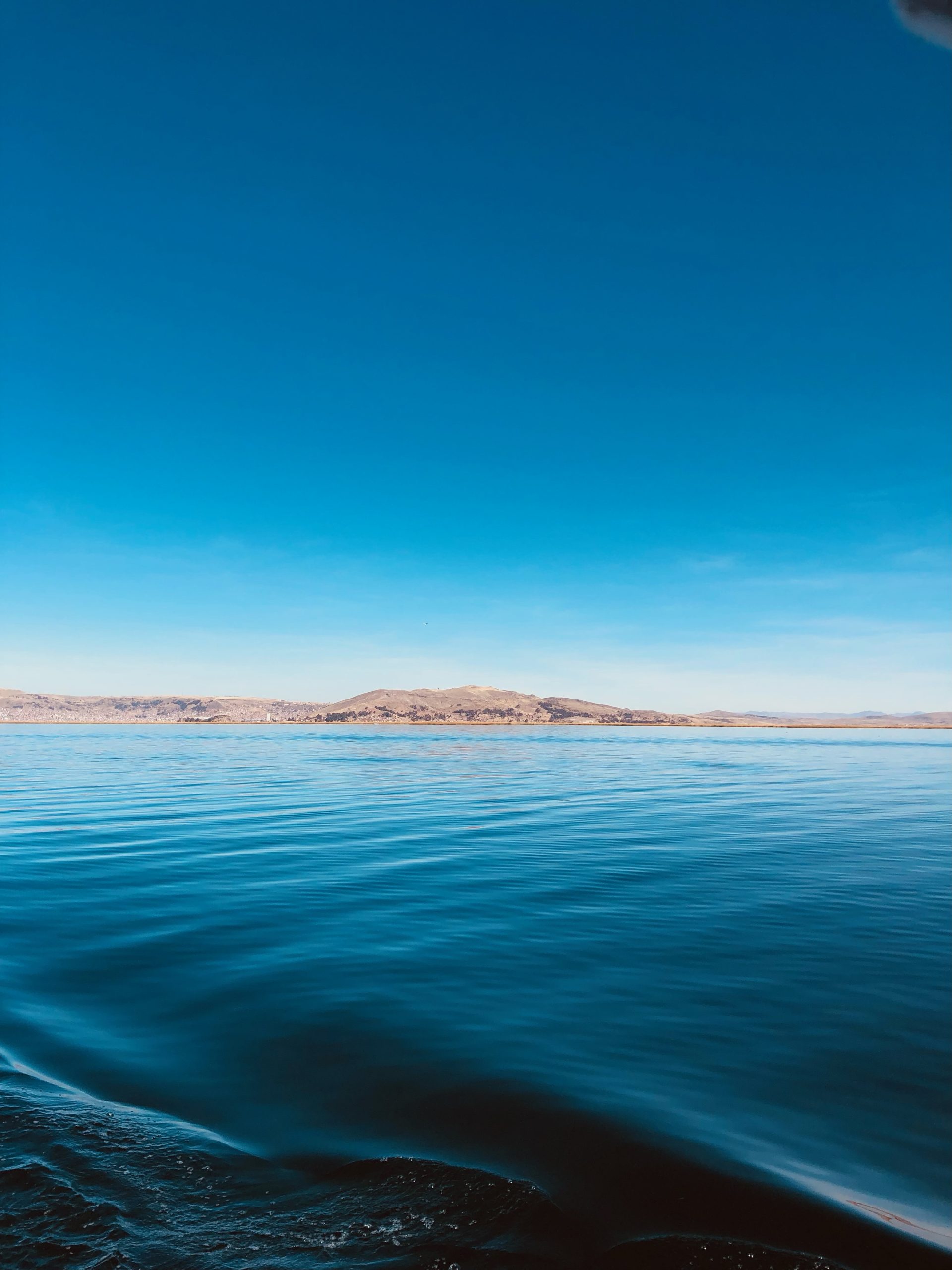
Lake Titicaca, situated on the border of Peru’ and Bolivia, is the largest lake in South America by volume and often dubbed the highest navigable lake in the world. The lake is renowned for its stunning beauty and rich cultural significance. On the Peruvian side, the town of Puno serves as a gateway to the lake. Visitors can explore the Uros Floating Islands, which are man-made islands constructed from totora reeds. These islands are home to the Uros people, who have maintained their traditional way of life for centuries.
Additionally, the islands of Taquile and Amantani offer authentic cultural experiences, where travelers can stay with local families and learn about the indigenous traditions of the Quechua-speaking communities.
Both Lima and Lake Titicaca offer unique and diverse experiences, allowing travelers to immerse themselves in the rich history, culture, and natural beauty of Peru’.
If you want to read more about Peru’, check out my blog post: Floating Homes in Uros Island.
No Responses